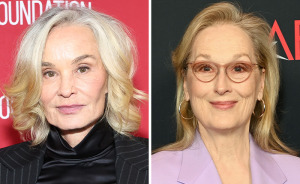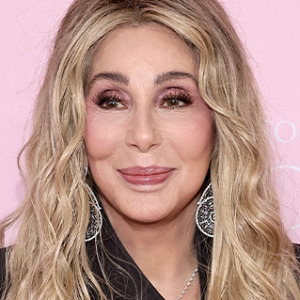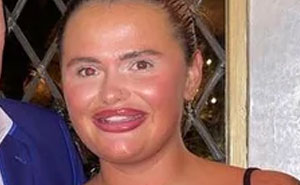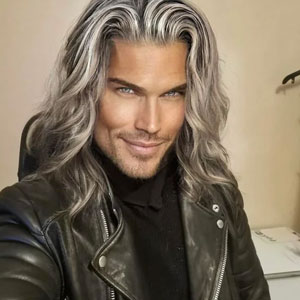The Oscars have passed and it’s about time to acknowledge a few actors who have never been properly recognized for their marvelous impact in the cinema industry. I don’t know about you, but the characters we feel for the most in movies are not actually humans. Adorable dogs are always first to steal the show and the viewer’s hearts. Their adventures bring laughter and tears like no one else's! If you like movies and dogs (basically, if you are a human), this delightful new book that compiles some of the most famous dogs to ever appear on the big screen was made for you!
60 charming, courageous and utterly talented four-legged Hollywood stars landed on the pages of Citizen Canine: Dogs in the Movies by author and film journalist Wendy Mitchell. It’s an exciting ride through the more than a hundred years of cinema history, an amusing peek behind the scenes, and an adorable collection of photos featuring our favorite dog movie stars, from Benji to Lassie to Beethoven—you name it!
“Way back in 2005, I was a reporter for a very serious film business magazine visiting Los Angeles to write about big deals being made for film productions and distribution. And a friend of mine was doing publicity for the 2005 Lassie feature film. He introduced me to HeyHey, a cute dog who was an actor and descended from the original Lassie. That dog was SO gorgeous and he posed so adorably with his paw on my knee. I was never the same again! I’d always loved dogs and loved films, but meeting one of the Lassie dogs made me think more about these smart dogs in film and how they work. When I was the editor of that serious film business magazine, Screen International, our main job was writing about the financing and production of films. But I noticed that any chance I’d get I’d run photos of dog films to illustrate our stories. The rest of the staff used to laugh at me. So I’ve been obsessed for 15+ years. And I couldn’t believe there wasn’t a book about the best dogs in movies. There are so many dog lovers and movie lovers, and I knew I wasn’t the only one who was obsessed with both,” Wendy Mitchell told Bored Panda.
More info: laurenceking.com | amazon.com
This post may include affiliate links.
The Puppies (Dalmatian), 101 Dalmatians, 1996
After the 1961 animated classic, Disney brought this beloved story to the big screen in live action in 1996, complete with real dogs and one intimidating bitch: Cruella de Vil, played by Glenn Close.
Canine couple Pongo and Perdy are brought together when their owners fall in love. They have a litter of 15 adorable puppies who are dognapped, along with 84 other puppies, because Cruella wants them for a fiendish fur coat.
The production used 230 puppies and 20 adult dogs. All of the puppies came from private homes as entire litters. Owners started training the dogs at six weeks old; at eight weeks old they were brought to the set at Shepperton Studios in the UK, working with 13 trainers.
There are six ‘hero’ puppies: Wizzer, distinguishable by his two black ears; Two-tone, by the one black ear; the densely spotted Lucky; Dipstick, aptly named because of his black tail; Jewel, with her ‘neck-lace’ of spots; and Fidget, who has one blue eye.
Health and safety measures were crucial with so many vulnerable young animals, and the set was disinfected daily. Head animal trainer Gary Gero explained, ‘No one has ever worked with puppies on this scale.’
Newborn nerves: The pivotal scene with Lucky coming to life stars a puppy who was just three days old (it was swaddled in a disinfected blanket). Only Jeff Daniels and the dog’s owner touched the dog.
Voicing concerns: Glenn Close, an avowed dog lover, said her Cruella voice could frighten the dogs. ‘Little Perdy would slink off the set with her tail between her legs. I felt very bad.’
I can imagine the adorable chaos having that many puppies/dogs on set. I’m amazed the movie got finished, I know I would be too busy playing and cuddling them to do any work.
Fly (Border Collie), Babe, 1995
No doubt, Babe is the finest talking-animal movie ever made, and maybe even the finest animal movie ever. Its numbers are impressive: 970 trained animals, 57 animal handlers, 18 months of animal training, six months of filming and 12 months of post-production. All that helped to rake in $250 million at the box office and earn seven Oscar nominations (including one win for visual effects).
As in Dick King-Smith’s 1983 book on which the film is based, when an orphaned pig arrives at Hoggett’s farm, Fly the sheepdog becomes his adoptive mother. On his first night at the farm, she puts her paw on Babe’s little head and they are inseparable ever after. She gives Babe’s face a grateful lick when he calls her ‘Mom’ for the first time, and despite her mate Rex’s ego-driven objections, Fly helps Babe become an unlikely sheepherder.
Fly (voiced by the jolly Miriam Margolyes) is good at dashing around the sheep as well as delivering emotions – looking confused, concentrating or looking forlorn (like when her pups are taken away). The snuggly chemistry was real between the dozens of pigs that played Babe and the several dogs who played Fly – they had all bonded playing during weeks of pre-production. That’ll do, pig (and dog).
Reality bites: About 80% of the film was made with real animals, and 20% using animatronic creatures. Digital computer animation was added to help them ‘talk’ in post-production.
Puppy love: Veteran animal trainer Karl Lewis Miller supervised all the animals and handlers and also had a small role, playing the happy man who buys Fly’s puppies.
My son (who is 24 now) LOVED Babe. He watched it all of the time as kid.
Marmaduke (Great Dane), Marmaduke, 2010
The trouble with dog movies using obvious CGI moments like dogs dancing and surfing is that you start to wonder if the canines only exist in a computer. That’s not the case with the first live-action film of Marmaduke, inspired by the long-running comic strip. Two-thirds of the movie features real canine actors…80 of them.
The gangly Great Dane and his family move from Kansas to California; he helps to bring them together as well as breaking through the canine cliques at the dog park.
The animals interact with people but also exist in a sort of parallel universe where they can hear each other talk and host their own game nights and fabulous parties.
Great Danes, with their bumbling huge bodies and drooling faces, are made for the big screen, especially in terms of physical comedy.
George and his half brother Spirit (weighing in at 160-plus pounds each) were the two ginormous Great Danes who played Marmaduke (voiced by Owen Wilson). As director Tom Dey explained, ‘George was the dog we needed to hit his marks, and Spirit was the one we needed to break down walls.’
Fresh meat: Head trainer Michael Alexander invented ‘meat glasses’ – sunglasses rigged with a dog treat so the dog would maintain the correct eyeline when looking at the human actors.
Prick up your ears: For scenes when Marmaduke’s ears perk up, a monofilament line was attached so a crew member could gently pull them up.
Lassie (Rough Collie), Lassie Come Home, 1943
Lassie was an overnight success: the most famous dog in history was a star straight from this first hit film.
Adapted from Eric Knight’s novel, Lassie Come Home is a simple but moving story about Yorkshire lad Joe (Roddy McDowall) and his loyal and intelligent collie. Joe’s impoverished family has to sell the dog and Lassie is taken to his new owner in Scotland (where she meets Priscilla, played by 11-year-old Elizabeth Taylor). But the dog is so loyal to Joe that she is determined to undertake a perilous journey of several hundred miles to get home.
A male one-year-old collie named Pal – owned and trained by Rudd Weatherwax – was originally cast as a lowly stunt dog, but was promoted to the lead after he adroitly navigated a tricky river scene. As director Fred M. Wilcox claimed, ‘Pal jumped into that water, and Lassie climbed out!’ He was also skilled at jumping fences, walking with a limp or crashing through a windowpane.
Pal starred in six more MGM films and the two pilots for the 1950s TV show before retiring. One critic called Lassie ‘Greer Garson with fur’ and the dog also inspired a financial windfall, grossing $238 million for MGM in the 1940s.
Big fur: Pal’s long, thick coat shed less in the summer than the female collie originally cast in the role. That lustrous fur also helped conceal the canine actor’s manhood!
Leading lady: For her 60th birthday, Elizabeth Taylor was given a collie puppy that was a great-grandchild (seven generations back) of Pal.
White Fang (Wolfdog), White Fang, 1991
White Fang’s story unfolds alongside a young Gold Rush prospector named Jack, and the wolfdog’s life is often more interesting than Jack’s. As a puppy, he is orphaned and has to fend for himself without a pack in the Alaskan wilderness; he’s adopted by a Native American family who train him to work, then he gets nabbed by professional dog fighters. When White Fang is injured in a brawl, Jack nurses him back to health and teaches him to trust humans again.
White Fang is quite the hero – he saves Jack from a bear, from a mine cave-in, and from a fire in his cabin. He’s even the one who discovers gold on Jack’s land.
Clint Rowe owned and trained lead dog Jed, who was part wolf (some sources say about 25%) and part Alaskan malamute.
Both Jed and lead actor Ethan Hawke more than do justice to Jack London’s 1906 classic adventure novel. Hawke, who was just 20 when he made the film, has paid tribute to Jed for decades. ‘[Jed] was one of the best actors I ever worked with…I’d see the way the wolf reacted to the camera when someone came into the room. Acting surprised. Not expecting it. If I were teaching an acting class, I’d get the half-wolf from White Fang to come in.’
Showing the fangs: To get Jed to growl and show a savage look by bearing his fangs, his trainer Clint Rowe simply said ‘teeth’.
Play fight: In the scene where White Fang is attacked by a pitbull, Jed wore a fur collar. That’s what the pit bull is biting, not Jed’s neck.
Hooch (Dogue De Bordeaux), Turner & Hooch, 1989
Hooch is the original lovable bad dog in film – think of him as the ur-Marley or Beethoven.
Hooch is the witness to a murder, so uptight police investigator Scott Turner (Tom Hanks) teams up with the dog to solve the crime. Don’t dwell on the ridiculous plot – focus on the magical relationship between young Hanks and his slobbering and slovenly sidekick.
A 10-year-old chocolate brown Dogue de Bordeaux (a rare breed) named Beasley took the lead, trained by Clint Rowe. Three other Dogues – Barry, Vigor and Cristo – were doubles.
Beasley manages one of the film’s best scenes when he thoroughly trashes Turner’s flat: devouring popcorn, spraying slobber over the hi-fi and vinyl collection, destroying the sofa and even chugging a few beers. When he’s caught in the act, the guilty look on Hooch’s face, with his head on Turner’s pillow, is priceless.
Turner and Hooch make one of cinema’s best odd couples. No wonder Hanks later said he wished the script had an, ahem, different ending for Hooch. Hanks would have been consoled to know there was at least a happy ending for Beasley. Most Dogues only live to age six but he lived to the ripe old age of 14 – or 98 in dog years. That’s a lot of slobber.
Daylight slobbery: Egg whites were used to create the copious amounts of on-screen slobber. One of the hardest tasks to train Beasley for was to shake his head on cue so that the slobber sprayed everywhere.
Soup’s on: Beasley didn’t want to drink beer, so he drank cans of chicken soup instead.
Benji (Mixed Breed), Benji, 1974
Benji wasn’t just a dog, he was a cultural phenomenon. This shaggy mixed-breed mutt became an icon in the 1970s thanks to Joe Camp’s underdog of a film that became a blockbuster loved by millions.
The titular tyke really is the star of this family classic. He announces himself in an ambling opening sequence by climbing over rooftops and jaunting through a small Texas town, truly a dog making his own way in the world. Love blossoms between Benji and Tiffany the Maltese, and of course Benji rescues his favorite kids Cindy and Paul by stealing a ransom note pivotal to stopping the film’s preposterous kidnapping plot.
The scenes of Benji scampering through soft-focus daffodils seem dated now, but the dog’s point-of-view filmmaking was groundbreaking at the time. The canine performance is one for the ages, thanks to especially fine work by rescue dog Higgins.
Famed animal expert Frank Inn taught Higgins more than 100 tricks. But the dog, who was practically elderly at 14 when the film shot, was even more special because of the range of emotions he could display on cue: content, inquisitive, distressed, sad. No wonder millions fell in love with him.
Not for the birds: The film was a guilty pleasure for Alfred Hitchcock.
Daddy’s girl: Higgins’ daughter, Benjean, took over the role of Benji in the first two film sequels.
Toto (Cairn Terrier), The Wizard Of Oz, 1939
Oz might not exist without Toto. Kansas farmgirl Dorothy would have never run out into that tornado if she hadn’t been trying to protect her beloved pooch. Toto is in nearly every scene of this classic, from the opening serenade of ‘Over the Rainbow’ to the emotional ‘there’s no place like home’ finale. It’s Toto who rounds up the Scarecrow, Tin Man and Cowardly Lion to rescue
Dorothy; it’s Toto who ventures behind the curtain to expose the Wizard.
MGM had famously considered a man in a dog suit to play Toto; it’s hard to imagine that scenario after seeing legendary terrier Terry play the role.
Trainer Carl Spitz adopted Terry as a shy, meek one-year-old and brought her out of her shell. Terry still had some spooked moments on set, as she was scared of the wind machines and startled by the steam that came out of the Tin Man’s hat. But Terry’s friendship with Judy Garland bolstered the pooch after a mishap: the dog suffered a sprained foot when accidentally stepped on by one of the Wicked Witch’s guardsmen. Terry took two weeks off the shoot and spent recovery time at Garland’s house. Terry, you’re not in Kansas anymore.
Pup’s paycheck: Spitz was paid $125 per week for Terry’s services – not as much as Judy Garland’s $500 a week, but more than the $50 a week some of the Munchkins earned.
What’s in a name: Terry starred in 16 films, but Oz became so iconic that Spitz later changed the dog’s name to Toto.
The absolute best faithful companion in the face of evil. Which we now learn the witch may have been misunderstood in the play Wicked.
Bailey (Red Retriever), A Dog’s Purpose, 2017
What is the meaning of life? This opening line of A Dog’s Purpose signals that this isn’t a ditzy dog flick. The film grapples with big existential questions as one dog’s soul moves across five decades and is reincarnated in different breeds, with an interior monologue voiced by Josh Gad.
We first meet mutt Toby, who becomes retriever Bailey, then German shepherd Ellie, then corgi Tino, then Australian shepherd/Saint Bernard mix Buddy.
Bailey gets the most screen time; trainer Mark Forbes thought red retriever Trip had ‘both the temperament to be trained and a special look that showed some great character’. Bailey’s best tricks are chasing his own tail in spectacular style, and jumping over his young master Ethan’s back to catch an old football.
Director Lasse Hallström encouraged improvisation: ‘Trip did things that were unexpected...but, like a good actor, his choices worked.’
It’s impossible to have a dry eye when an older Ethan meets the lumbering Buddy and realizes he might be his old companion Bailey, back to chase footballs again decades later. And what does this omniscient dog discover to be its ultimate purpose? To ‘be here now.’
Cross breeds: In all, 29 puppies and dogs played the five leads; 70 canine extras were also recruited.
For the dogs: Dog lover Lasse Hallström directed two other canine-centric films: My Life as a Dog and Hachi: A Dog’s Tale.
Sandy (Otterhound), Annie, 1982
In this starry musical, the famous orphan meets street dog Sandy when she rescues him from a pack of mean boys. Annie’s cunning also saves Sandy from the dogcatcher, after which she takes him home to the orphanage. She loves the mutt so much that when she is offered the chance to move to billionaire Daddy Warbucks’ mansion, she won’t go without her hound. On a fancy trip to Radio City Music Hall, the shaggy sidekick even gets his own velvet seat.
The lead canine actor was six-year-old Bingo, a pedigree otterhound (a rare British breed), who dined every night of the shoot on steak or prime rib. Sandy doesn’t have many challenging stunts in the film – except jumping into a pool to ‘save’ Daddy Warbucks – but he impresses with his natural charm, like when hiding under a pile of laundry and being serenaded by dozens of little girls.
John Huston, the veteran filmmaker behind The Maltese Falcon who was improbably hired to direct Annie, came around to working with Bingo…and dozens of dancing kids. He said, ‘that old belief that you should beware of children and animals is absurd. If you know anything about children and animals, they live up to your expectations, always.’
Fruity fun: To entice Bingo to kiss her when needed, Aileen Quinn, the 10-year-old actress who played Annie, would rub an apple on her face.
Remake revisions: The 2014 remake of Annie saw Sandy played by a completely different kind of dog – Marti, a golden retriever-chow mix rescued from a shelter.
 Image credits: laurenceking
Image credits: laurenceking 
 Dark Mode
Dark Mode 

 No fees, cancel anytime
No fees, cancel anytime 
















































































